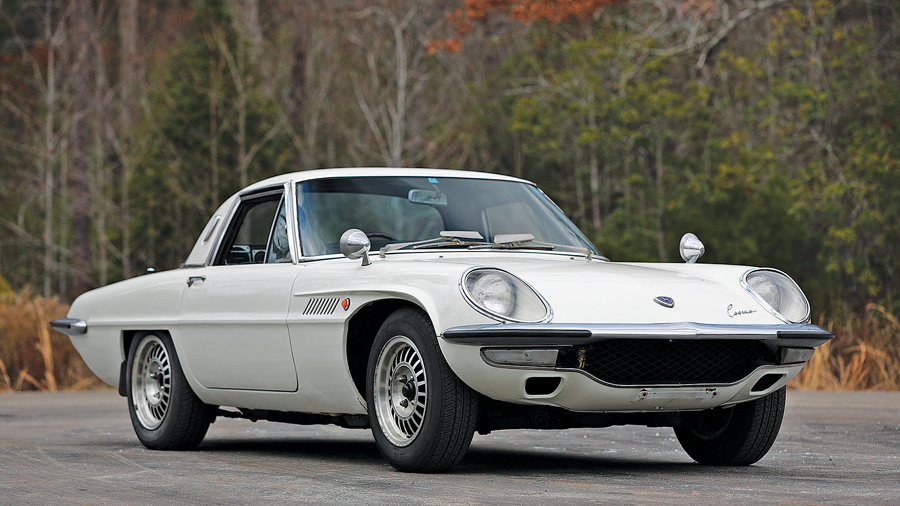Chassis Number: L10A10512
Mazda Cosmos are more than a cool-looking novelty. The high-revving rotary engine, 4-speed transmission and lightweight body combine to produce a driver’s car that will make you smile. On offer is a fine, mostly original example of a very rare 110S Export model that comes from the large private collection of a Japanese Domestic Market enthusiast.
Although the number of previous owners is not known, the current owner, an avid JDM collector, purchased this 110S in 2014 from one of the largest rotary-engined car collections in Japan. He imported it and titled it and added it to his impressive collection. This wonderful example has only ever been regularly maintained and is in predominantly original condition. In Japan and today it’s been stored in a climate-controlled environment.
Most websites identify just two versions of the Mazda Cosmo: the L10A Series I short wheelbase and the L10B Series II long wheelbase. However, there was a third “interim” version. After beginning production of the L10B, Mazda recognized a growing interest from outside their homeland. Rather than putting stress on their already limited production capabilities, they took the remaining stock of L10A engines and bodies and rebadged them as “110S Export” models.
These are very easily identified by the “Made in Japan” stamped into the hood latch and the large, open “guppy-mouth” air dam below the front bumper, which was a modification made for the L10B longer-wheelbase body. Although purchased from a Japanese collection, this car on offer is easily identifiable as a legitimate 110S Export model. The official export certificate states that this car was first registered in Japan in 1970 and it is simply one example that never left the country.
In largely original condition, it’s apparent that this car has had some paintwork and the seats have been covered with vinyl covers over the original material. The engine bay is really a joy for a JDM enthusiast to view, as these are rarely seen in such untouched condition.
Offered here is a very correct, well-maintained, enthusiast-owned Mazda Cosmo. Although a common entrant in public auctions, it would be difficult to find a genuine 110S export model that’s in as original condition as this one.

